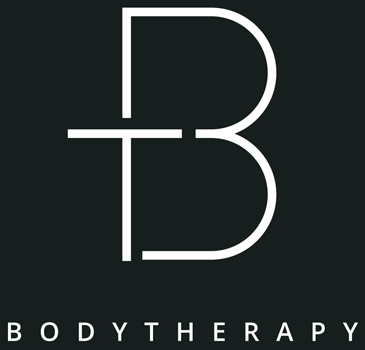Why Heat Hijacks Your Zzz’s
As physiotherapists, we love when patients recover deeply – and sleep is the crown jewel of recovery. But on muggy July nights, the body’s ability to cool itself is disrupted, messing with delicate thermoregulation.
- Core temperature needs to drop: Normally, your body cools by about 1°C to trigger melatonin and deep sleep. But on hot/humid nights, the skin remains too warm, limiting heat loss and leading to fragmented sleep, reduced slow-wave (SWS) and REM sleep, and frequent wake-ups.
- Sleep disturbances happen fast: Even just one overheated night can blunt recovery mechanisms – raising heart rate, reducing heart rate variability, and impairing autonomic control.
- Exercise in heat = sleep debt: Training heavy in warm weather often backfires – studies show prolonged heat with muscle-damaging exercise increases sleep hours but lowers efficiency and quality.
Bottom line: Heat-induced poor sleep hampers tissue repair, impairs gain, worsens pain thresholds, and derails rehab. So sleep-cooling is not a luxury, it’s essential rehab strategy.
Cool Down Bedroom & Bedding – First Line Defence
Ideal Bedroom Temperature
Aim for approximately 18°C (64-68°F). Above 25℃, research shows increased wakefulness and lighter sleep stages, especially on humid nights. Keep humidity low too – use a dehumidifier or a fan to reduce that sticky microclimate.
Lukewarm Showers 60-90 Minutes Before Bed
A lukewarm shower prompts vasodilation of skin vessels and boosts evaporative cooling – helping the core drop temperature. As The Guardian notes, “Hot showers…calm the nervous system” and help buffer core temperature before sleep. If sore (hello physio patients), it’s a win-win.
Choose Breathable Bedding and PJs
Natural fabrics like cotton or linen allow airflow and wick sweat – crucial for preventing that damp sleep microclimate that causes wake-ups. Loose, lightweight PJs > sleeping naked (contrary to myths – see evidence below).
Physio-Approved Cool-Down Hacks (Beyond the Basics)
Cool Hands and Feet
Peripheral vasodilation enhances core cooling. Warm foot baths (approx 37℃) or gentle hand-soaks in the evening works wonders. Think “spa chill out before bed” and it helps your core temperature drop.
Evening Stretching = Thermal AND Muscle Reset
Gentle shoulder-neck-back stretches boost circulation, ease tight muscles, and set your body into a relaxed, cooler state. Bonus: better posture means fewer cramps or pain disrupting sleep.
Avows Intense or Heat-Inducing Tasks Late
Late workouts – especially in July’s heat – keep core temperature elevated, delaying sleep onset. Save heavy lifting or cardio for mornings. Evening should be mobility work, light restorative moves, or foam-rolling – cooling both body and mind as you head for bed.
Hydrate Smart (Without Middle-of-the-Night Breaks)
- Drink regularly all day and early evening
- Cut fluids approx 60 minutes before bed to avoid night-time bathroom runs
- Avoid booze and caffeine late – they interfere with both thermoregulation and sleep architecture
Relaxation + CBT-I Inspired Routine
Evidence-based sleep hygiene (CBT-I) helps subdue the heat-stress loop:
- Consistent schedule: Go to bed and wake up within 30 minutes daily (yes, even weekends)
- Wind-down routine: 60 minutes before bed -> lukewarm shower -> light stretches -> deep breathing or meditation -> screen curfew
- Get up if you can’t sleep: If you’re tossing and turning beyond 20 minutes, leave bed, do calming non-screen activity, and retry later – relying on the bed for ONLY restful sleep.
While pure CBT-I isn’t a one-size-fits-all cure, night-time relaxation tactics do not help most in hot conditions.
Advanced Physio-Grade Cooling Tips
Cold-Water Immersion (CWI) Tricks
A brief foot or hand cold soak (e.g. 15-30℃) can help drop core temperature. It may also boost parasympathetic tone – ushering in a calmer nervous system.
Palm-Cooling Devices
Emerging studies show that cooling palms (via gel packs or tech) can delay fatigue – and might help at night by keeping core temperature lower. Fun fact: it could be your clinic’s next gadget!
Cool Mattress or Top Sheet Tech
Sleep tech like high-heat-capacity mattresses or temp-controlled sheets have demonstrated small but meaningful boosts in deep sleep and reduced core temps. Great for patients with chronic pain or post-menopausal sweating.
Physio-Friendly Night Checklist
- Fans/AC to approx 18℃ – Prevent microclimate that disrupts SWS/REM
- Lukewarm shower – Vasodilation + cooling = faster core drop
- Breathable bedding – Stops sweating microclimate, supports skin cooling
- Cold feet/hands soak – Boosts thermal cooling; sleep onset easier
- Evening stretch/mobility – Relaxes muscles, signals parasympathetic shift
- Light evening takes – Prevents core temp elevation before sleep
- Hydration cutoff – Reduces nocturia without dehydration
- Wind-down routine – Combines CBT-I + thermal prepping for sleep
- Optional tech/gadgets – CWI, palm cooling, or cooling sheets for persistent trouble
Clinician Takeaway
From a physiotherapy standpoint, sleep quality is the foundation of rehab efficacy. Hot summer nights can seriously erode recovery, prolong pain, and delay rehab goals. By building simple, evidence-backed routines – focusing on cooling, relaxation, and thermal-aware mobility – you’re equipping both yourself and your patients with summer-smart recovery tools.
References
-
Okamoto-Mizuno, K., & Mizuno, K. (2012). Effects of thermal environment on sleep and circadian rhythm. Journal of Physiological Anthropology, 31(1), 14.
https://doi.org/10.1186/1880-6805-31-14 -
van Marken Lichtenbelt, W. D., et al. (2006). Individual differences in thermoregulatory responses to mild cold and heat in humans. Physiology & Behavior, 88(3), 282–289.
https://doi.org/10.1016/j.physbeh.2006.03.023 -
Lan, L., & Lian, Z. (2016). Ten questions concerning thermal environment and sleep quality. Building and Environment, 99, 252–259.
https://doi.org/10.1016/j.buildenv.2016.01.021 -
Lafrance, M., et al. (2021). Sleep disruption by heatwaves: A systematic review. Environmental Research, 201, 111510.
https://doi.org/10.1016/j.envres.2021.111510 -
Cheshire, W. P. (2016). Thermoregulatory disorders and sleep disturbance. Continuum: Lifelong Learning in Neurology, 22(4), 1151–1165.
https://doi.org/10.1212/CON.0000000000000341 -
Buguet, A. (2007). Sleep under extreme environments: Effects of heat and cold exposure, altitude, hyperbaric pressure and microgravity in space. Journal of the Neurological Sciences, 262(1–2), 145–152.
https://doi.org/10.1016/j.jns.2007.06.001 -
Lemmer, B. (2008). Chronobiology and chronotherapy of hypertension. Blood Pressure Monitoring, 13(4), 1–6.
https://doi.org/10.1097/MBP.0b013e32830436a2 -
van den Heuvel, C. J., et al. (1997). Effects of passive body heating on sleep onset latency, core body temperature, and melatonin secretion. Sleep, 20(10), 885–890.
https://doi.org/10.1093/sleep/20.10.885 -
Sawka, M. N., et al. (2011). Integrated physiological mechanisms of exercise performance, adaptation, and maladaptation to heat stress. Comprehensive Physiology, 1(4), 1883–1928.
https://doi.org/10.1002/cphy.c100082 -
American Academy of Sleep Medicine. (2017). Practice guidelines for cognitive behavioral therapy for insomnia (CBT-I).
https://aasm.org/resources/pdf/CBT-I-guidelines.pdf -
Harvard Health Publishing. (2019). Why sleep is important for recovery.
https://www.health.harvard.edu/staying-healthy/the-importance-of-sleep-for-recovery -
NHS England. (2022). Sleep and insomnia: Tips for better sleep in hot weather.
https://www.nhs.uk/every-mind-matters/mental-wellbeing-tips/how-to-sleep-better/ -
Humanitas Research Hospital. (2023). How to sleep well despite the heat.
https://www.humanitas.net/news/sleeping-well-despite-the-heat/ -
Bupa UK. (2023). Tips for sleeping during a heatwave.
https://www.bupa.co.uk/newsroom/ourviews/how-to-sleep-well-when-its-hot -
Ars Technica. (2023). Heat and humidity combine to ruin sleep across the globe.
https://arstechnica.com/science/2023/07/heat-and-humidity-combine-to-ruin-sleep-across-the-globe/
Photo by Dave Hoefler on Unsplash

